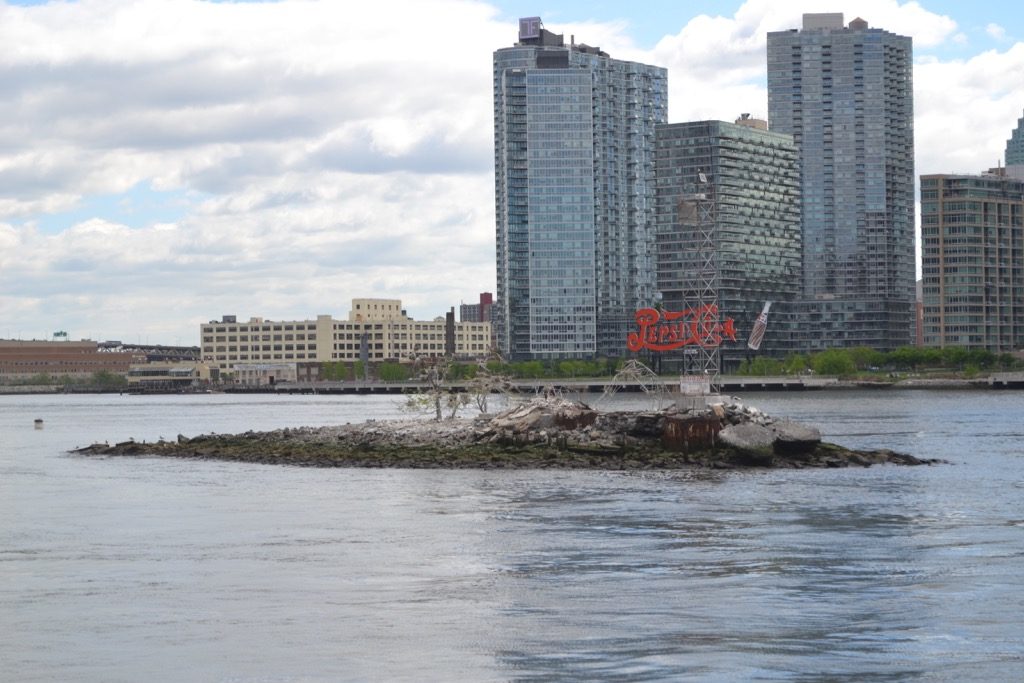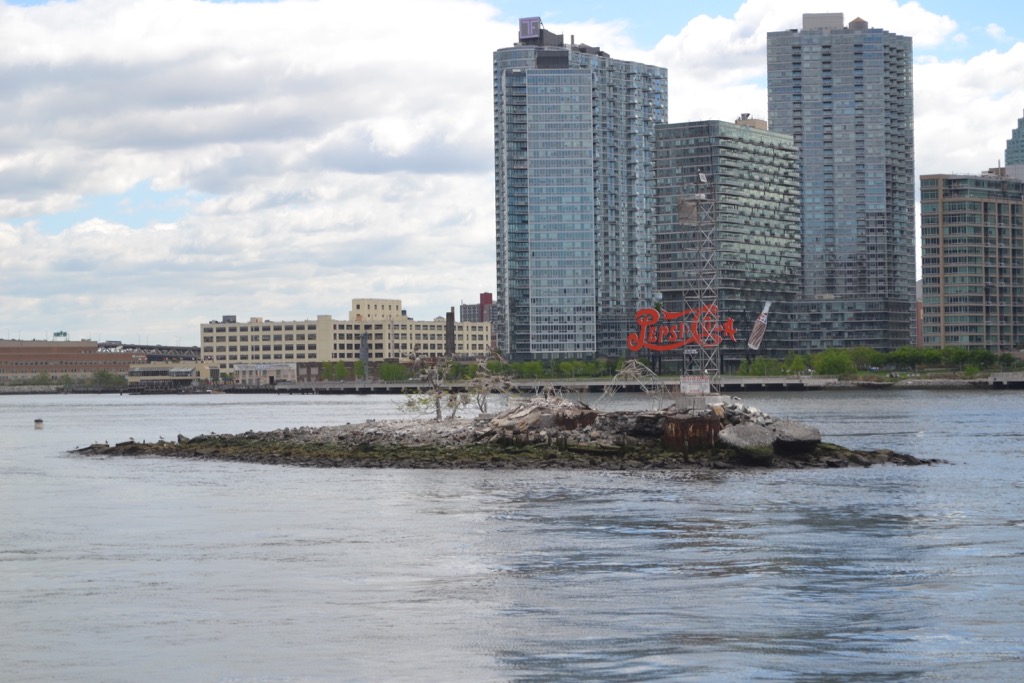[ad_1]

Beautiful U Thant Island.
ARTNEWS
So long as it’s not raining, the boat ride from East 34th Street in Manhattan to Frieze New York, which alights each year on Randalls Island in the East River, is always a pleasure. (Usually, Frieze also offers a ferry from East 90th Street, but this year that’s canceled because of construction.) The sun smiles down, the sweet smell of fresh water fills the air, and the sights of this beautiful city glide by. There’s the United Nations at 42nd Street! And look, over on the shores of mighty Queens, it’s the iconic 1936 Pepsi-Cola sign! And right after the Queensboro Bridge in Manhattan, Alice Aycock’s wild red East River Roundabout (1995)! It just reopened last weekend after some refurbishment, and it looks great.
There are also sights that are a bit more mysterious along the way—specifically, on the other islands of New York, which each offer their own pleasures. The Other Islands of New York City, an indispensable volume by Sharon Seitz and Stuart Miller, notes that New York is made up of more than 40 islands, ranging from the lesser-known to the entirely obscure, and three can be seen easily on the boat ride to Queens.
The first on the boat ride from 34th Street is the tiniest of the trio, U Thant Island (also known as Belmont Island), which measures just 100 by 200 feet. It stands proudly alone off the coast of the U.N. Some unusual plants are always growing on it, and birds use it as a sanctuary. I like to think of it as the Mitchell Algus Gallery of islands—proudly doing its own thing, modest in scale but highly esteemed by those in the know; a place where remarkable things flower. A very good island.
Almost immediately after U Thant, which is named for the former U.N. Secretary General (it’s a somewhat long story), comes Roosevelt Island, which is arguably the best-known little-known island in New York, being home to more than 11,000 people. Louis Kahn’s august Four Freedoms Park, completed posthumously in 2012, sits on the south shore, and Mae West was once confined to a prison there for an “indecent performance.” In the 1970s, a pneumatic-tube system was installed to handle garbage collection—it’s still in use today. Last year, a new school, Cornell Tech, opened on the two-mile-long island. With its rich history and its penchant for bold experiments, Roosevelt Island is the Pace Gallery of New York’s other islands.
Finally, just after passing Roosevelt Island, a strangely shaped island appears, with a short peninsula jutting out from a vaguely ovular landmass. This is Mill Rock, and while it may be just four acres, it is reportedly home to cormorants, egrets, and black-crowned night herons, among other avian creatures. Mill Rock was created in 1885, when the United States Army Corps of Engineers destroyed Flood Rock, an island that was difficult to navigate, using 300,000 pounds of explosives, and utilized the resulting rubble to fill in the islands of nearby Great Mill Rock and Little Mill Rock. In 1969 it played host to part of the Seventh Avant-Garde Festival. A thriving little ecosystem of unusual delights with a complicated origin story, Mill Rock is the East River’s Reena Spaulings Fine Art.
After that, Randalls Island (which was artificially conjoined with Wards Island in the mid-20th century) awaits. But if you are in the mood for more island adventures, there are plenty more not too far away, like North Brother Island, South Brother Island, and Rat Island. Bring your boat, or hire a yachtsman or woman, or perhaps give the artist Marie Lorenz a ring, and go island hunting. A whole world awaits you.
[ad_2]
Source link

